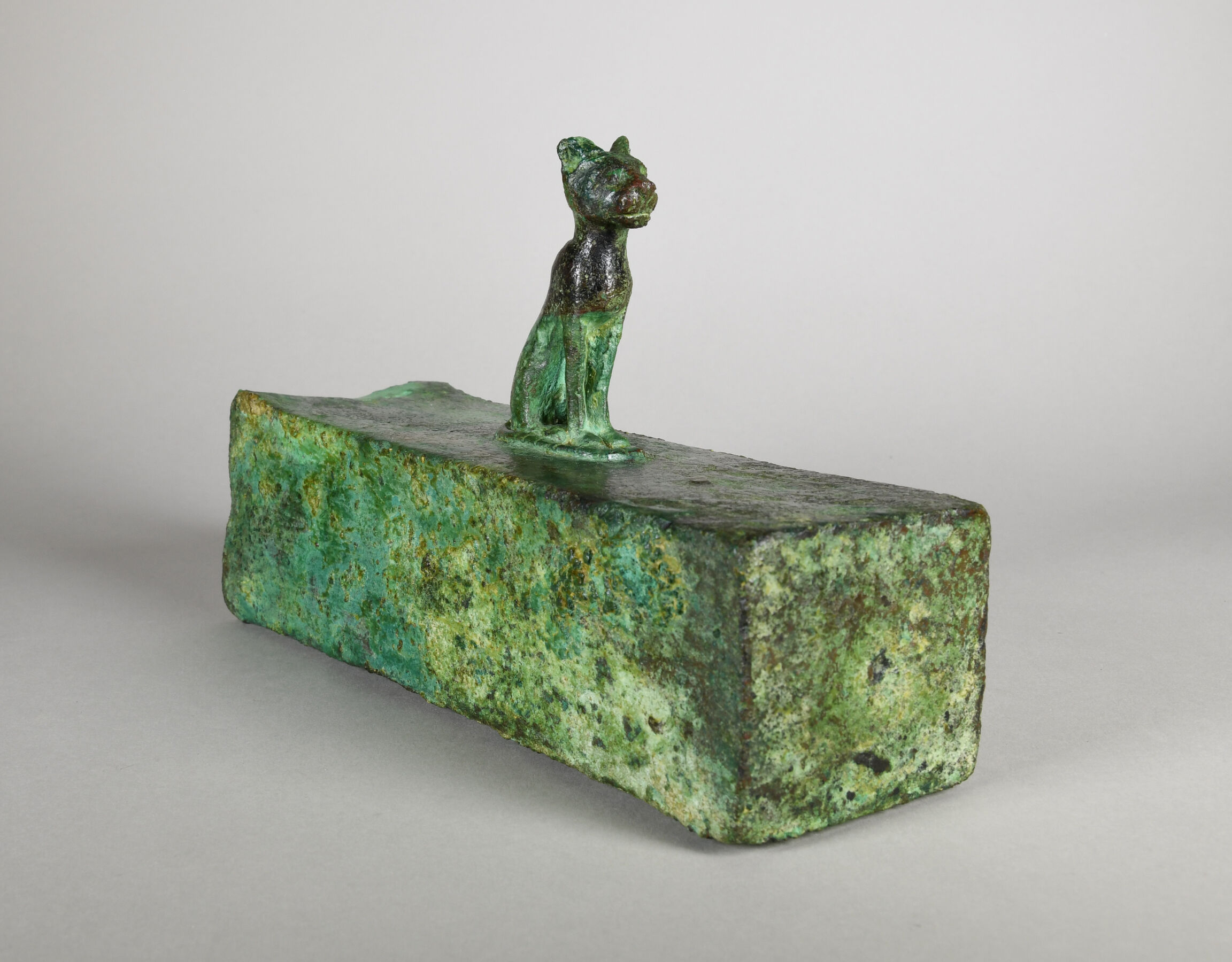Cats and other animals were bred and embalmed in temples and buried in catacombs established for this purpose. Some cat mummies were placed in wooden cat-shaped containers, while others were interred in wood or bronze rectangular boxes. Offering these cat mummies in a temple was believed to help convey one’s prayer or gratitude to a feline deity.
This bronze coffin is surmounted by a cat figurine, representing the goddess Bastet. Generally, the primary orientation of figures in two-dimensional art was facing the viewer’s right.1 Because of this, cats’ tails are always depicted on the cat’s right side in sculpture, relief, and painting.
MH
-
Fischer, Henry George. 1977. The orientation of hieroglyphs, part I: Reversals. Egyptian Studies 2. New York: Metropolitan Museum of Art.. ↩︎
Bibliography
- Fischer 1977
- Fischer, Henry George. 1977. The orientation of hieroglyphs, part I: Reversals. Egyptian Studies 2. New York: Metropolitan Museum of Art.
